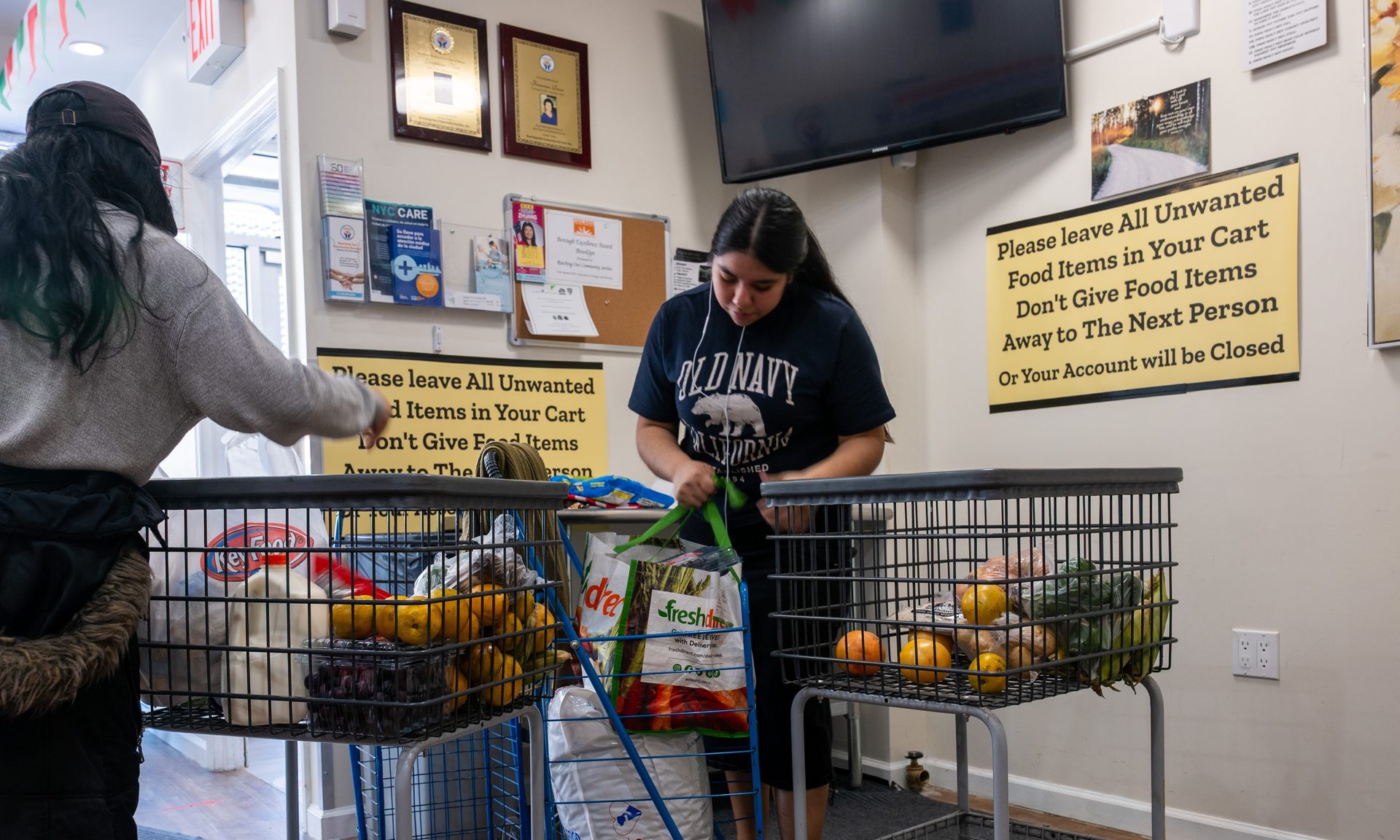Without a Net: Who Will Feel the Pain From Budget Cuts?
The new “big, beautiful” budget slashes funding for Medicaid, SNAP and ACA subsidies.

Many, or all, of the products featured on this page are from our advertising partners who compensate us when you take certain actions on our website or click to take an action on their website. However, this does not influence our evaluations. Our opinions are our own. Here is a list of our partners and here's how we make money.
Millions of Americans are now at risk of losing health care coverage or food assistance under the GOP’s recently passed mega-budget, which includes sweeping cuts and new restrictions on critical social safety net programs.
The GOP’s $3.3 trillion budget, dubbed the “big, beautiful bill,” includes $4.5 trillion in tax cuts and approximately $300 billion for President Donald Trump’s defense and immigration enforcement priorities. To partly offset the steep cost, the bill targets reductions across the board — but hits health and food assistance programs hardest.
Medicaid and the Supplemental Nutrition Assistance Program (SNAP) subsidies face deep cuts and work requirements. Affordable Care Act (ACA) subsidies will also be reduced. The burden of these cuts is expected to fall most heavily on existing and eligible recipients, as well as on state health programs, food banks and rural hospitals that depend on federal support to deliver services to vulnerable populations.
The timing of certain changes to social safety net programs isn’t entirely clear — the bill didn’t attach a specific implementation date for SNAP work requirements, for example, but it could be as early as this year. For Medicaid requirements, states have until the end of 2026 to begin enforcing. And the biggest cuts to Medicaid and SNAP won’t begin until 2028.
“We’re not all going to wake up one morning and find millions more people uninsured,” said Larry Levitt, executive vice president of health care policy for KFF, a health care policy and research organization, during a press call on July 9. He added that the impact of changes to Medicaid and the ACA will roll out slowly over the next decade.
With program restrictions and cuts looming, here are the people and programs who will feel the most pain.
People who rely on Medicaid for health care coverage
More than 78 million people are enrolled in Medicaid in 2025, according to Medicaid.gov, about 23% of the U.S. population. They include eligible low-income adults, pregnant women, children, older adults and people with disabilities.
The bill's changes to Medicaid will unfold in two phases.
First, states must enact work requirements by the end of 2026, according to the bill. To stay enrolled in Medicaid, recipients must demonstrate they are working, caring for small children, attending school or work training at least 80 hours per month.
And yet, KFF finds that most people under the age of 65 who receive Medicaid are already working full-time or part-time or attending school. So it’s not lack of work or schooling that would push Medicaid enrollees off their health care coverage, it’s the complex red tape that the new requirements introduce.
That is, at least, how it worked when Arkansas tried to do it.
Arkansas briefly implemented 80-hour-per-month Medicaid work requirements for enrollees ages 30 to 49. The restriction was in place from June 2018 to March 2019, when a federal court struck it down. During that time, 18,000 people — about 25% of the covered population — lost health care coverage, according to a September 2020 study from Harvard T.H. Chan School of Public Health. The losses were largely due to failures in reporting or documentation, not ineligibility.
Moreover, the policy had no effect on employment in the 18 months following the end of the program. But there were significant health and financial consequences for those who lost coverage, compared to those who remained on Medicaid: Nearly 50% reported serious medical debt problems, while 56% delayed health care and 64% delayed taking medications, both due to cost.
Meet MoneyNerd, your weekly news decoder
So much news. So little time. NerdWallet's new weekly newsletter makes sense of the headlines that affect your wallet.
At the highest risk for losing coverage are those with chronic illness or disabilities who cannot obtain exemptions; those with mental health conditions; and those whose work hours fluctuate from one month to the next, such as seasonal or gig workers. The Congressional Budget Office (CBO) estimates that 5.2 million adults will lose Medicaid due to work requirement restrictions.
The second rollout of Medicaid changes won’t begin until 2028, but those are the deepest cuts. Provisions include new cost-sharing charges between states and low-income working enrollees for certain health care services. The changes also require states to end non-Medicaid health care coverage for immigrants.
A June 24 assessment by the Congressional Budget Office projects that as a result of all the changes to Medicaid and the ACA (more on that below), approximately 12 million will lose health care coverage.
People who have health coverage through ACA marketplaces
Changes to ACA requirements and subsidies could result in 8.2 million people losing health care coverage through ACA marketplaces, according to CBO estimates.
The first set of changes are stricter requirements: Those who access health care through the ACA marketplace face new annual update conditions for income and immigration status. They’ll also face a shorter window to enroll each year.
The most significant impact is what’s missing from the bill: An extension of the enhanced premium tax credits for ACA marketplace coverage, put in place during the pandemic, which expire at the end of the year. Premium tax credits are a federal subsidy that helps cover monthly premium costs for those who purchase health insurance through the ACA marketplace.
If enhanced tax credits expire, out-of-pocket premiums in the marketplace could increase by more than 75% and up to 90% in rural areas, according to KFF CEO Drew Altman, during the press call. He also said that enrollment could drop as much as 50% in rural areas.
Levitt added that the measures in the bill amount to “what is effectively a partial repeal of the ACA," which passed 15 years ago. Federal data shows an estimated 45 million people are enrolled in health coverage through the ACA — about 13% of the U.S. population.
State health programs and rural hospitals
Federal cuts to Medicaid and the ACA will shift financial responsibilities onto states, which is likely to add financial strain to state health programs and hospitals — particularly community health centers and rural hospitals.
For decades, states have used provider taxes to help fund Medicaid and state-directed payments. The bill limits how states can do so.
Robin Rudowitz, vice president at KFF and director of the Program on Medicaid and the Uninsured, said during the press call that if states are limited in how they can use provider taxes, they’ll have to come up with other ways to replace that money like increased taxes, cuts to other program spending or further changes to their Medicaid programs.
The cuts would also mean hospitals will receive lower payments, which means hospitals may have to scale back certain services or close altogether. Hospitals with low margins, like rural hospitals, are likely to face the biggest obstacles.
KFF estimates that 12 states with large rural populations and expanded Medicaid could see federal spending on their programs decline by $5 billion or more over 10 years. Kentucky stands to lose $12 billion — the highest among all states.
Kentucky, for example, relies heavily on provider taxes. Kentucky Hospital Association, which represents over 100 hospitals in the state, says the bill’s cuts puts 20,000 people at risk of losing their jobs. A study from University of North Carolina found that 35 rural hospitals in Kentucky could be in danger of closing due to the provisions in the bill.
There is one source of hope for rural hospitals in the bill: States may apply to access a $50 billion fund to support rural hospitals, to be distributed for five years beginning in 2027. But the fund won’t likely offset the cuts. Levitt said “Delayed relief, even if sizable, won’t arrive fast enough to prevent closures.”
People who need food assistance
As with Medicaid, low-income Americans who are eligible for SNAP will face new work requirements as soon as this year and the effects of funding cuts later in 2028. The total reduction in SNAP spending in the bill: $295 billion over the next decade.
More than 42 million people receive SNAP benefits, according to the USDA — about 12% of the U.S. population.
It’s worth noting that there are already work requirements built into the SNAP program — able-bodied people without dependents, ages 18 to 49, must work at least 20 hours per week or 80 hours per month. But the bill raises that upper age limit to 55, which means millions more people will be impacted. It also eliminates or tightens exemption criteria for states to waive work requirements for certain individuals.
The issues that SNAP work requirements present remain, according to the Center on Budget and Policy Priorities (CBPP): increased administrative burdens, more people losing assistance and no improvements in long-term employment outcomes.
While food banks don’t directly rely on SNAP to deliver its services, a loss of SNAP funds could put added pressure on already-strained programs. Feeding America, a nationwide network of food banks, estimates the bill’s provisions could reduce anywhere from 6 to 9 billion meals annually.
(Photo by Spencer Platt/Getty Images News via Getty Images)
Article sources
NerdWallet writers are subject matter authorities who use primary,
trustworthy sources to inform their work, including peer-reviewed
studies, government websites, academic research and interviews with
industry experts. All content is fact-checked for accuracy, timeliness
and relevance. You can learn more about NerdWallet's high
standards for journalism by reading our
editorial guidelines.
- 1. FEMA. Hazard Mitigation Assistance Grants. Accessed Jul 28, 2025.
Related articles






